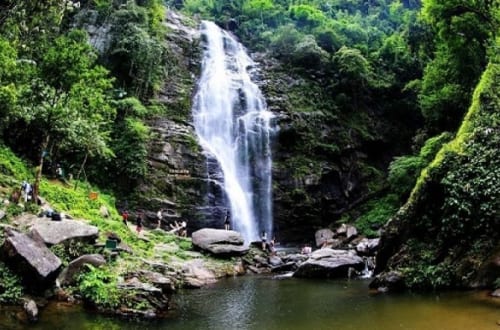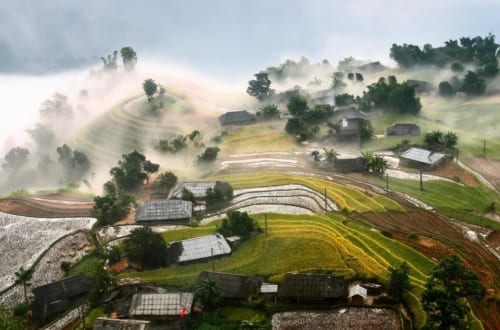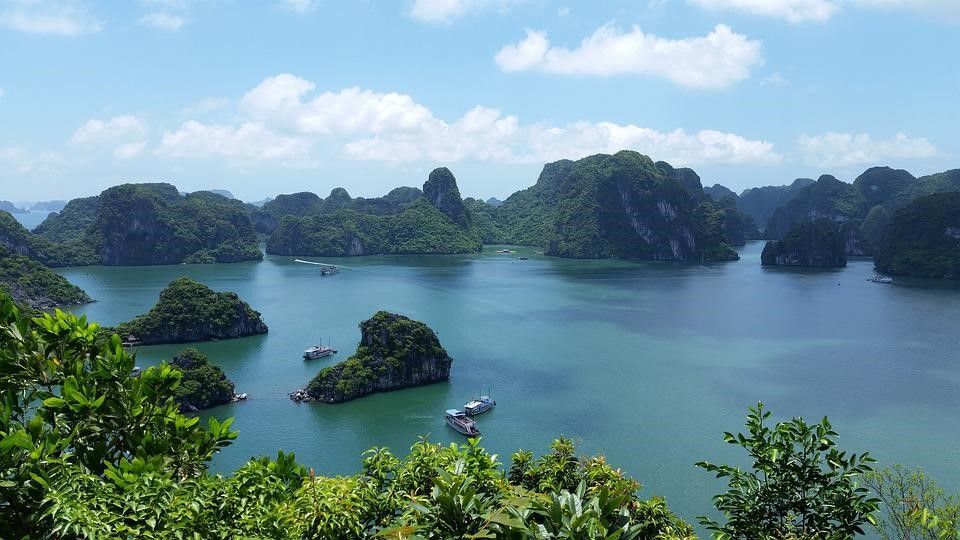
Halong Bay, travel guide
Table of contents
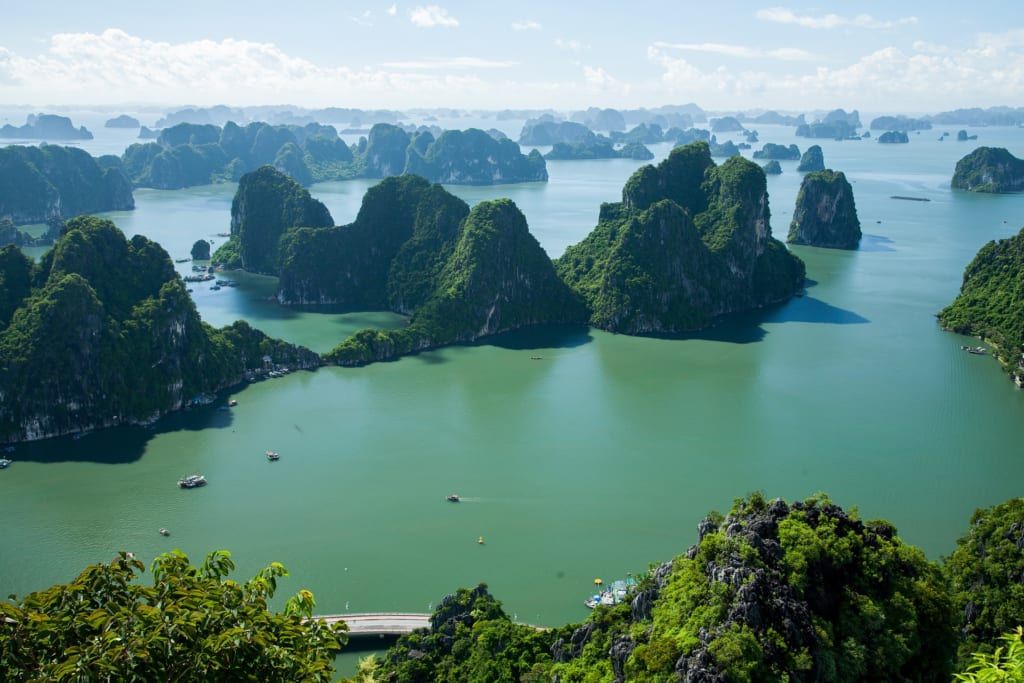
Halong Bay is among the marvelous and the “not to miss” thing in life. This brief travel guide about Halong Bay will provide main information about this legendary and mysterious site.
Asia is a continent built on legends. This folklore has enabled peoples to forge a common identity. With more or less divine creatures sharing the heavens and lands sometimes under the same surname. And if there is one legendary animal common to all of Asia, it is the dragon. But then, what is the relationship between the dragon and Ha Long Bay? Focus on this magical region of Vietnam.
The dragon, démiurge of Halong Bay
We forget the Western dragons of Arthurian legends and imagine a wingless dragon floating in the air thanks to the crest it obtains as it evolves. Basically, it’s a kind of long snake equipped with small legs. He is credited with multiple powers, including that of creating worlds… more or less without his knowledge.
The emperor of Jade
Take for example the very true legend of the creation of Halong Bay. It says that the Jade Emperor (the big boss, in fact) sent the mother-dragon and her young to earth to protect the Vietnamese from wars around. Descending to earth, the Dragon and his progeny sowed here and there many Jade jewels and a multitude of pearls in the sea. However, by touching the water, these precious stones were transformed into immense rocks still visible today. Preventing invaders from the sea from arriving on the Vietnamese coast.

The giant dragon
Or listen to this other story, which is believed to be even more true. Once there lived in the waters of Ha Long an enormous dragon “as big as the world and high as the sky”. He was so big that when he unfolded, “his body supported the whole land of Annam, his heart was in Huê and his limbs stretched between the two deltas of the North and the South”. But… it happened that one day, the spirits of the waters decided to kill him. Allying themselves with men, with fish, with spirits of the air.
The dragon, suspicious, hurled a jet of flame at them. Its breath was so powerful that all remained petrified for eternity. Tinh, the genius of contrary waters, was transformed into a pointed rock. The toad had his feet rooted in the water; the wife of the evil wind could keep her beautiful profile in the rock; the tortoise let its beautiful forest-covered back emerge. Very happy to have thus repelled his attackers, the dragon went to the highest mountain in the North from where he plunged into what is now called the Gulf of Tonkin. The eddies created by its tail drew mountains, valleys and crevices. Then the water spread everywhere, leaving emerged only a few lands and infertile rocky peaks witnessing the dragonesque bathing
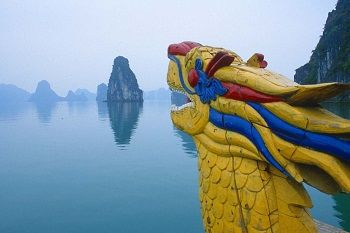
The dragon savior
And finally the variant that makes everyone agree (except geologists), is the one that evokes a time when sea monsters had the detestable habit of invading the country. The dragon, ancestor of the Vietnamese (with his wife the fairy Au Co), descended from the sky with his children to save him, the country. They spat pearls like projectiles which turned into rocks. The enemies being repelled, the fabulous animal descended to earth. And its movements hollowed out Ha Long Bay, while a shake of its tail brought out the islet of Bach Long Vi (Tail of the White Dragon). The antics of a small dragon gave birth to the bay of Bái Tu Long (son of the prostrating dragon). And what do you have? Ha Long means: “The Descent of the Dragon”, so the legends are true!
Ha Long Bay, a natural shield against invaders
Whatever the legend, the fact remains that the Dragon and its progeny have done a good job. (perhaps not voluntarily trying to argue geologists). The site has seen great historic naval battles. The labyrinth formed by all its islands undoubtedly contributed three times to stopping the Chinese and/or Mongol invader.
Closer to us, it was the pirates who played hide and seek in the bay, with the aim of going up the river. Under the French, the bay was mapped and names were assigned to certain islands. They found coal deposits there, which were exploited at the time by the French Tonkin coal mining company and which, over the years, contributed to the ecological mess of Halong Bay . And finally, even closer to us in time, this tangle of karst peaks was one of the many theaters of the war against the United States.
Halong Bay travel guide
When and how to enjoy Halong Bay
Fascinating in many respects, Miss UNESCO 1994 needs no introduction. The surreal, almost unreal landscapes of some 2,000 karstic islands and islets (a very complicated word for limestone) have made the bay an icon of the country in both Deltas. The 1500 km² of what is commonly called Halong Bay is in fact a set of 3 bays. First we find the small bay of Lan Ha , south of Cat Ba Island, being inaccessible to junks of cruises. Halong Bay itself is located north of Cat Ba . Finally, the bay of Bai Tu Long , north of Halong Bay , is characterized by larger islands with good beaches and fewer visitors.
Travel guide season to visit Halong Bay
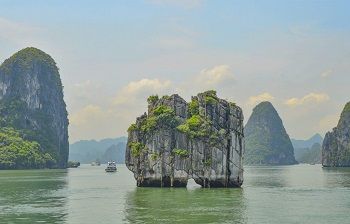 In April , you will find generally sunny weather, without drizzle or fog. Excellent conditions to enjoy the natural beauties of the bay. At the start of the period, temperatures can still be quite cool. But they increase rapidly from the end of April. That being said, this period is at the beginning of the high season (between May until the end of September). Many visitors, remember to book well in advance.
In April , you will find generally sunny weather, without drizzle or fog. Excellent conditions to enjoy the natural beauties of the bay. At the start of the period, temperatures can still be quite cool. But they increase rapidly from the end of April. That being said, this period is at the beginning of the high season (between May until the end of September). Many visitors, remember to book well in advance.
From May to October , it is very hot, but also the sunniest period and with the clearest sky . There may be short but heavy showers. Be careful between the end of July and the beginning of October at the risk of typhoon.
In the winter months (late October-late January), if visibility is good until around Tet, temperatures are cool. After Tet (understand late January / early February), high risk of fog and a persistent drizzle rather sad.
Visiting Halong Bay
The more fortunate among you will fly over the bay by seaplane. But the majority will enjoy a one or two-day cruise, either in Ha Long Bay, or from Lan Ha or Bai Tu Long, or a combo of two or three bays… A one-day getaway is of course possible. Do not hesitate to ask us for advice, the variations are (almost) countless. Small, more intimate private junks are also available and will allow you to enjoy a truly typical trip on the jade waters.
How to get to Halong Bay
Depending on the bay you want to visit, you will go to Tuan Chau port, which depends on Ha Long (for Halong and Bai Tu Long bays) or you will go to Hai Phong port. Then, you will take a ferry for the island of Cat Ba and from there , you will embark for Lan Ha. A shuttle system can pick you up at the foot of your hotel, if you live in the old quarter. Here too, it is best to contact a local travel agency to organize your excursion on the mythical waters of Halong Bay in the most comfortable way
This travel guide offers main information about Halong Bay, contact us to receive more detailed ones.
More information about Halong Bay here


